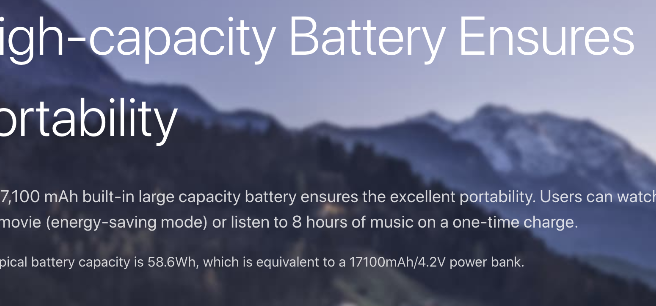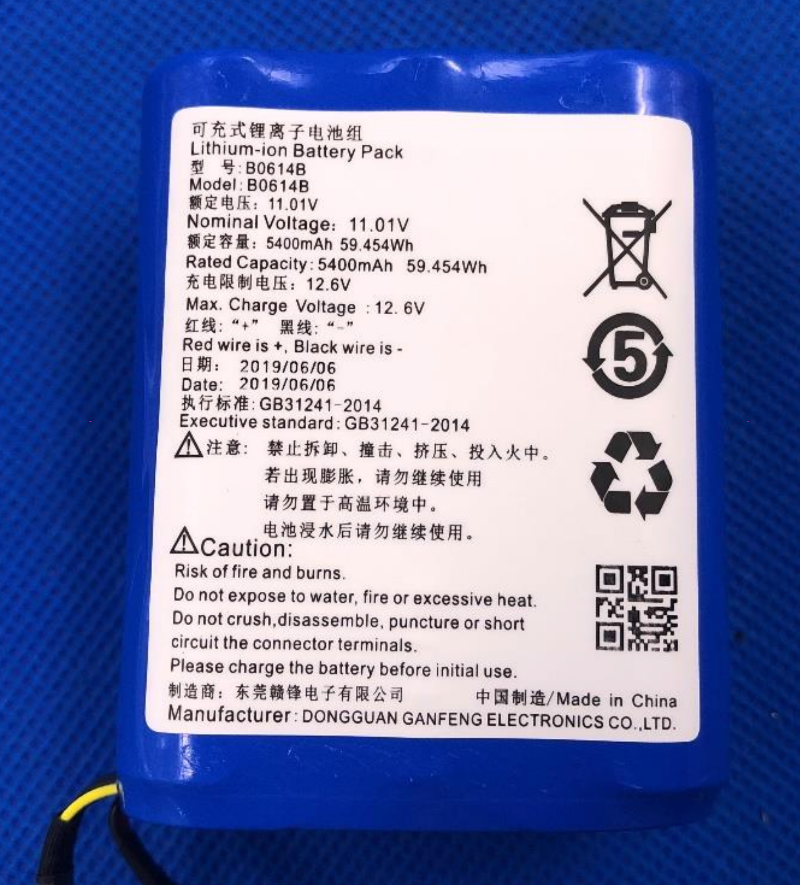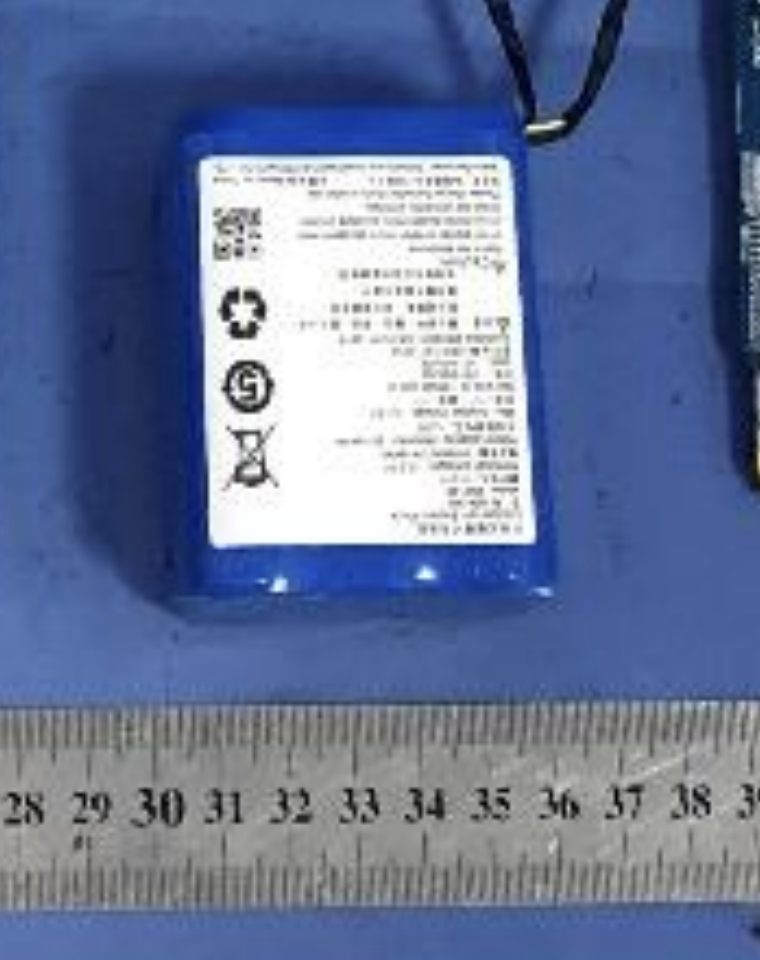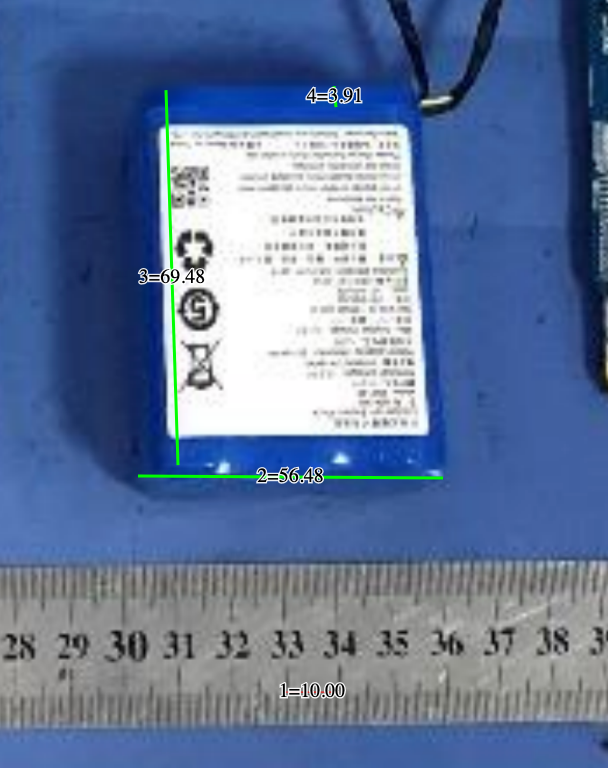I've been doing some research into the battery of the Halo, since the claimed 17100mAh capacity simply doesn't seem to add up.
First, here's the claim from the website:

I'd like to point out the obvious mathematical error. The website claims 58.6Wh at 17100mAh/4.2V. First of all, the formula to calculate battery capacity is Voltage multiplied with Current (or Amperage in other words). To simplify this, the formula is, using the unit indicators is:
Wh = Ah * V
What the website claims is the following - having converted the 17100mAh to 17.1Ah (1000mAh = 1Ah):
58.6Wh = 17.1Ah * 4.2V
Except first grade math already disproves this: 17.1 * 4.2 is 71.82, NOT 58.6! That's already a ~20% difference. 58.6Wh at 4.2V would be 13.95Ah, or 13950mAh. And 58.6Wh at 17.1Ah would mean 3.42V. No pairing adds up.
Not to mention that battery capacity is generally calculated not at the maximum voltage of the cells, but at the nominal voltage - this is due to "voltage sag" - as the battery discharges, its internal voltage drops from the maximum (4.2V) to approx. halfway empty (3.6V) to completely discharged (3-3.2V depending on the cell). During this time, the current that can be drawn from the battery raises, to provide an even wattage (say, to get 5W out of a battery at 4.2V will require an approx. 1.19A current, but at 3.6V it needs more, 1.4A, and at the end of the battery, up to 1.6A). The more amps you pull, the faster the battery discharges, so altogether you are closer to the actual capacity of the battery if you calculate with the nominal voltage, 3.6V on average.
At 3.6V, the numbers look a bit better: 17.1Ah * 3.6V = 61.56Wh which is much closer to the claimed capacity. Still not quite right though. The closest match is still 3.42V, but that voltage is completely unconventional, even for LiFePo4 cells. Conclusion: either the indicated power capacity (58.6Wh) or the indicated current capacity (17100mAh) is wrong.
Conclusion 1: The indicated capacity on the website is WRONG
Now, I couldn't rest, so looked some details up. Luckily, the FCC - the Federal Communications Commission (yes, those assholes who almost ruined net neutrality for some sweet lobby money) does one thing that we all benefit from. They certify any and all devices that are to be sold on the US market, and can be used for communication in any way. If it includes any sort of wired or wireless communication - WiFi, Bluetooth, USB, hell, if it outputs Morse chirps, even that is covered - they need to certify it. One key part of this process is to take measurements and photos of the device in question, outside and in. Lucky for us, Xgimi did not ask for confidentiality, so the interior and exterior photos are available, albeit at a reduced resolution. I would like to point out a close up photo of the battery:

According to the packaging, this battery is 11.01V nominal, 12.6V maximum voltage, at 5400mAh - giving us an ample 59.454Wh, a whole Watt hour more than the website claims! Well, we obviously have to consider conversion loss - the cell is around 11V, but most integrated circuits like the CPU in these devices, work at 3.3V - this was specifically chosen for Li-Ion cells, because most are tolerant of a little over-voltage (which can be easily regulated with a step down buck converter, and are quite efficient), so you could technically run most boards off of a Li-Ion cell directly. But our cell is 11V!
The reason for this is also simple - the CPU, the board, etc. requires a specific level of wattage. At 3.6Vnom, you need more amps to provide the same wattage. A math example: 50W at 3.6V needs ~14A, whereas at 11V, you need less than 5A. This is important because Li-Ion batteries are designed to provide a given continuous (and another rated, called "spike") current. If you vape, you might've come across of people warning you not to use a low continuous current cell in your high wattage vape. E.g. a 160W vape is usually using two Li-Ion batteries connected in series (connecting batteries in series increases voltage, connecting them parallel increases current rating), because they need to provide up to 4.5-5V voltage - and a step down buck converter is much more efficient converting from 7.2V (the nominal voltage of two 3.6V cells connected in series) at a low current, than a step up unit converting a high current 3.6V input to 5V. So, at 7.2V, you will need cells that can sustain ~22A continuous current draws. Generally it's recommended to go for 25-30A cells.
So, as the above image shows, we have 3 cells, obviously connected in series - since the voltage is exactly 3 times as much as the nominal, and maximum voltage of a single Li-Ion cell is. 11.01V / 3 = 3.67V and 12.6V / 3 = 4.2V.
Conclusion 2: The battery in the Halo is a 3S cell
Now, here comes the weird part. I did a bit of photo measuring, using the less clear photo of the internals, that clearly shows a millimeter ruler:

I know, I know, really bad resolution. But enough to work with! Here is the result:

The total cell height is 69.5mm (number 3 on the image), but we can clearly see from the first, higher resolution photo that the battery pack has a "hat" (on the bottom, where the wires are coming out). This "cap" is roughly 4mm in height (number 4 on the image), making the batteries within the wrapper (which you can clearly see, are 3 cylindrical units) about 65mm high.
The width of the pack is roughly 56.5mm - divided by 3, it's roughly 18.8mm. Take away the wrapper, and we have three, approx 18.5mm thick cells.
These values are eerily close to the 18650 battery format - used in all sorts of electronics, from flashlights, to laptop batteries: yes, when your laptop manufacturer says it's a "6 cell battery", it means there's 6 of these bad boys in it. Or, an even bigger surprise - those Tesla electric cars? They pack some 7000+ of these cells to drive you around (note: Tesla recently changed from 18650 to 21700 - a battery cylinder that is 21mm wide and 70mm long, due to better energy density). But 21700 is way too big for this pack to work out.
Conclusion 3: The battery pack is built of 3x 18650 cells
Well, the Halo only got three of these.
An interesting claim: 5400mAh?
It is clearly visible that the claimed current capacity of these units is 5400mAh. There's only a little problem with that: if the batteries are connected in series, that means each and every cell is 5400mAh. Remember, battery voltage adds up in serial connection, current adds up in parallel connection. An 59Wh cell in parallels will be ~16000mAh at 3.6V, and the same 59Wh cell will be 5400mAh at 11V.
Except... There's not a single (actually verified) 18650 cell that is 5400mAh! Sure, you can find AliBaba and Wish links that claim some ridiculously high capacity - often up to 9900mAh - but these are mostly lies. In fact those are mostly reject cells that could not deliver the needed continuous current draw, and were dumped, bought up by other companies who relabeled them, and are now selling basically explosives worse than the Galaxy Note 7 was. Most of the "my vape exploded" stories end up being these shitty, relabeled cells being sold to people who don't know better, and try to pull 20A on a battery that didn't even pass the 5A test. This causes a thermal runaway, and boom, battery bomb.
The claimed 5400mAh capacity is actually 50% more than any verified cell in existence. Simply said, the claims on the battery are NOT CORRECT. In fact, if you divide it by 3, you get 1800mAh - which is a quite common capacity for everyday cells, with a usual continuous current rating of 10-15A. Since the Halo needs ~90W power (the charger is a 19V 4.7A one, which is in total ~89W), at 11V, the 10A provides ample power, allowing the Halo to draw roughly 110W at any time (turning on the device does cause a current jump which then settles, so I'm guessing the cells are rated 15A to provide headspace without damaging the batteries).
The thing is... The math does not add up in any way if we go by the official documents. If my above statement is correct, and the manufacturer of these cells did indeed multiply not just the voltage, but the amperage of the cells by 3 as well, simply said, Xgimi's claims on the 17100mAh at 4.2V are a lie. In fact, this little "skimming" on the details triples the claimed capacity. I'm about 99% sure that these cells are indeed 1800mAh, putting the battery pack at 19.818Wh, or precisely at 1/3 of the claimed capacity. Quick math: 19.818Wh at 4.2V is 4700mAh, 27.5% of the claimed capacity. Even at 3.6V, it only adds up to 5500mAh, or 32% of the claimed capacity.
FINAL CONCLUSION: WE'VE BEEN ACTUALLY CHEATED OUT OF 2/3 OF THE CLAIMED CAPACITY
Another calculation I can run by you to verify this is the energy density of Li-Ion batteries, which is in the range of 250-693 Wh/L - this is coming from Wikipedia. We will do the math with both the highest and lowest density.
First, let's calculate the volume of the pack! We know that it is roughly 70mm tall, 56.5mm wide, and the height comes easy, 1/3 of the width, or 18.83mm. For the simplicity I will calculate both the boxed volume (ignoring that the three cylinders do not fill all the available space), and the volume of 3x 18650 cells as well.
The first, boxed volume is easy. 70 * 56.5 * 18.83 = 74 473 cubic millimeter, rounded up. 1 liter is exactly 1 000 000 cubic millimeter. So, we're talking about 7.5% of a liter, if we count by boxed volume. 7.5% of 250Wh is 18.75Wh, 7.5% of 693Wh is 52Wh. So even the highest density battery, filling out the whole space the battery pack occupies, would not be enough to get to the claimed 58/59Wh!
Now, let's account for the packaging, the "hat" of wiring, and all. Let's count with 3x 18650 cells. The volume of a cylinder is V=π r^2 h
The radius, r, is half of the diameter, which we established at 18mm - so it is 9mm. Height, h is 65mm. π is a constant, 3.14.
So volume here would be: V = 3.14 * 9*9 * 65. The total volume of a 18650 cell is then ~16550 cubic millimeter. Triple it up, and you get 49600 cubic millimeter. Turns out, almost 1/3 of the volume of the pack is lost due to packaging, the batteries being cylinder shaped, and the wiring. But let's not get stuck on the details. Rounded up, because we're nice, this gives us 5% of a liter's worth of batteries. 5% of 250Wh is 12.5Wh, 5% of 693Wh is 34.65Wh.
If we're kind, and average it out, we get:
- 35.5Wh average for boxed volume
- 23.6Wh average for proper battery volume
Our previously calculated ~20Wh capacity is just around the average of proper battery volume - slightly less, since we calculated with low capacity (1800mAh) cells).
@Ari I understand you're just community support and most likely have little to no oversight on the technical details, however I'd like to ask you to go into your R&D or manufacturing department, and just to verify, open up one of these battery packages. Seeing the specifications that are most likely printed on the cells, just under the blue plastic shrink wrap, would resolve this mystery once and for all. I won't call Xgimi liars outright - most likely you're purchasing these cells readily wrapped and labeled from another manufacturer, and have been misled yourself, however the battery being less than 1/3 of the advertised capacity is a serious issue, and would explain why the projector only lasts about 2 hours on battery power alone.
I would also like to make note of the fact that the Mogo/Mogo Pro (and apparently there's a new model called Mogo Play coming out?) all have 4-cell batteries, and both of them come with considerably lower capacity - 36Wh and 44.8Wh, respectively. Wasn't it a bit suspicious for you that a smaller battery pack contains almost twice as much capacity? Didn't your engineers realise that all the power usage of the internals of the Halo is almost exactly 1/3 of the power usage needed to deplete the claimed battery capacity in that amount of time? If the labeling was correct, the Halo should be getting a much higher, approx. 6 hour battery life. I hope these questions can be answered properly, and not just wish-washed away like most of the complaints on this forum.
THIS IS A VERY SERIOUS ISSUE. THE REPUTATION OF YOUR COMPANY DEPENDS ON IT.






